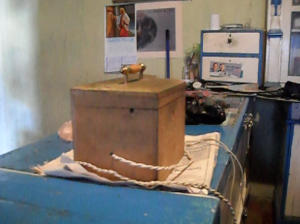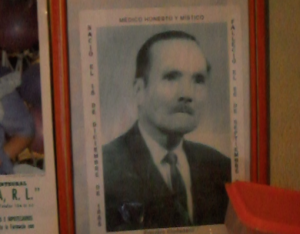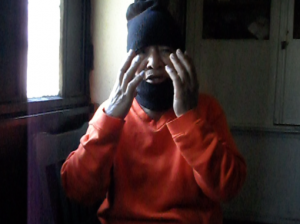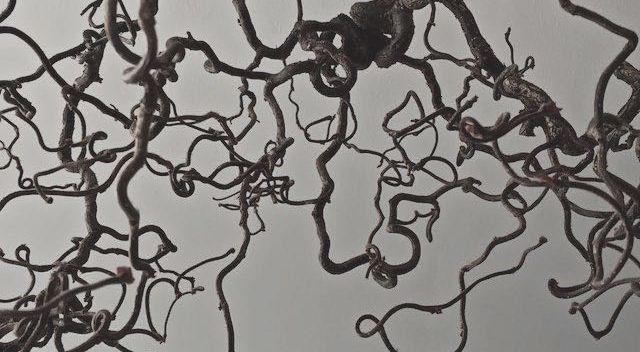¶ 1 Leave a comment on paragraph 1 0 Welcome. Please read the instructions for reviewing before commenting. We ask contributors to be generous when thinking along with our pieces and to keep in mind that the final chapters are intended to be short essays. Visit matteringpress.org for more information on its other books. Readers might also want to have a look at this resource created by one of the book’s editors, Emily Yates-Doerr, which catalogues key Open Access anthropology publications.
¶ 2 Leave a comment on paragraph 2 0 By Nicholas Copeland
¶ 3 Leave a comment on paragraph 3 1 While conducting ethnographic fieldwork on indigenous political organizing in northwest Guatemala in the mid 2000s, I encountered, quite by accident, an apparent epidemic of Bell’s Palsy—an illness involving the paralysis of one half of the face, known locally as derrame facial (facial stroke) or parálisis facial. After conversing with sufferers, I began to wonder what their condition and the prevalence of cases might reveal about how marginalized Guatemalans experienced social life after decades of injustice and reactionary violence in the midst of a failing democratic transition.
¶ 4 Leave a comment on paragraph 4 3 US clinicians define Bell’s Palsy as a temporary paralysis of one side of the face caused by trauma to the seventh cranial nerve.[i] Researchers in Minnesota found that the condition affected 20-30 in 100,000 people.[ii] Although there are few identified risk factors, pregnancy and advancing age are understood to play predisposing roles. Central to the dominant US medical model of facial paralysis is a bodily trauma that causes the cranial nerve to swell against the narrow and bony fallopian canal, affecting all functions associated with the seventh nerve: muscular movement of the neck, forehead, and face (including its expressions); secretions of the lower jaw; tear duct and salivary gland expression; taste; and outer ear sensation. Although the exact cause is often undiagnosed the types of injury commonly understood to produce Bell’s palsy include wounds, blunt force, broken bones in the face, injuries to the brain stem, tumors—specifically acoustic neuroma—and cysts, as well as infection and autoimmune disorders. The lower halves of the faces of those afflicted with Bell’s palsy are usually swollen and one side of their mouth droops down, as if they were smoking an invisible pipe. They have difficulty eating, closing their eyes and mouths, and controlling their facial expressions.
¶ 5 Leave a comment on paragraph 5 1 This purportedly universal biomedical description—“biomedical” in that it focuses exclusively on the bodily causes of disease, pathophysiology[iii]—belies its origins in specific studies with distinct populations, and erases a potentially heterogeneous set of “biomedical” practices and definitions. This fairly standard description has a wide circulation, and helps many clinicians—in and beyond North America—to identify cases and treatments. I interviewed a doctor in Huehuetenango who repeated this medical definition nearly verbatim. However, this authoritative description elides the experiences and meanings associated with derrame in the rural department of Huehuetenango where I worked. Most cases that I encountered corresponded with intense frustration and emotional trauma, although there were several cases that corresponded with unexpected and uncontained alegria (usually translated as joy or happiness).
¶ 6 Leave a comment on paragraph 6 0 I met one young indigenous man who had saved for two years in hopes of migrating to the US with his new bride. When her parents forbade her, their dreams vanished, and his face twisted out of control. His disfigurement covered with a yellow bandana, he explained how he had spent the money instead on a costly regimen of vitamin-B injections. An NGO worker told me that her aunt’s face paralyzed when she was robbed, having just withdrawn 20,000 quetzales (US$3000) from the bank. The value of a life’s work congealed in paper, gone in an instant. An activist friend recounted seeing similar cases among clandestine “communities of populations in resistance” (internally displaced) during the war, indigenous villagers who had fled violence and were living in extreme deprivation and fear, constantly moving through mountains and jungle to evade the army. Sometimes the torsion of expression lingered, and at times became permanent, which many attributed to a lack of treatment.
¶ 7 Leave a comment on paragraph 7 0 Facial paralysis befell my long-time friend who was defrauded by a bank. After working for three years in the US, he returned to Guatemala and placed his life savings into BANCAFE. In the early 2000s, the bank’s owners illegally deposited millions into offshore accounts, declared insolvency, and fled the country. Thousands of account holders organized rallies, demanding that the government take action, only to be told that their protests were in vain as it was too late to hold the bank accountable. To punctuate this point, the national police turned water cannons on protestors in Guatemala City. My friend was furious with the crooked bankers and their government accomplices, but couldn’t do anything. When his anger exploded into a brick wall of intransigence, derrame struck.
¶ 8 Leave a comment on paragraph 8 0 I began seeing cases everywhere, far more than the North American biomedical accounts might have predicted. When I dug deeper, I was referred to a pharmacy in a small town near the department capital that offered low cost home remedies for this peculiar condition: light electric shocks to the face from a metal wand wired to a hand crank magnetic generator housed in a metal box. The device was invented by a long-deceased doctor, a town founder and Rosicrucian mystic. This I was told by his aging granddaughters who treat a steady stream of cases for over a decade—7-10 each day. They charged 15 quetzales for a session that lasts about 15 minutes, far more affordable than the vitamin or steroid injections prescribed by local physicians. I watched them treat patients, who said that the shocks loosened their muscles and provided temporary relief. Some were cured after several visits. During the extreme counterinsurgency violence of the 1980s, the pharmacists remembered that cases of derrame more than tripled.
¶ 9
Leave a comment on paragraph 9 0


¶ 10 Leave a comment on paragraph 10 1 Sometimes emotional and bodily stress combined. One poor, middle- aged, disheveled single mother wrapped her head in a black shawl and avoided bright light. She explained that her derrame began when she was lying awake at night worrying about how to pay for her child’s education after his school announced they were raising tuition. Abandoned by her partner and caring for several children, she made a meager living selling tamales on buses, waking up before 5am to cook them, and carrying a heavy basket on her head all day in the hot sun, which gave her a terrible headache. Contrary to the North American understanding, where derrame strikes once and does not recur, this was her third derrame. She recounted a previous case caused by alegria, nineteen years ago, when she gave birth to her first daughter after having four sons. Another woman linked her derrame to susto (fright) and enojos (angers)—to use oversimplified translations—resulting from routine physical abuse by her husband upon whom she and her children were dependent. The pharmacists reported seeing more female than male patients due to domestic abuse and also, they believed, because of reactions to hormonal birth control injections. However, the medical cases were not always correlated to acute misfortune or unexpected happiness; several sufferers I interviewed claimed that there was no precipitating event, although they might not have wanted to reveal such personal or potentially embarrassing information to a gringo holding a camera.
¶ 11
Leave a comment on paragraph 11 0


¶ 12 Leave a comment on paragraph 12 4 Rather than see all cases as instances of a universal category: ‘Bell’s palsy’, I follow medical anthropologists who examine how meanings, categories, and emotions configure distinct illness experiences, which are further shaped by social, historical, and political contexts. I am also interested in bodily intensities and nervous systems, in the plural, as historical and social artifacts. What might these cases of derrame reveal about how Guatemalan social and political realities congeal in living bodies and affective imaginaries? How does bodily affect blur the line between individual experience and social worlds? I found one clue in that almost everyone I spoke with narrated their derrame as a result of their being forced to tragar (swallow) intense and generally negative emotions that could not find an outlet or satisfaction. This metaphor of ingestion and forcible envelopment dramatizes the interminable labor of absorbing pain and frustration into the body and speaks to the existence of some kind of habitual disposition of defensive girding associated with this process. Derrame only means stroke in the limited context of a brain hemorrhage. It also means to spill out and over: experiences of structural violence that cannot be absorbed or somaticized spills over onto the face, or perhaps in the cases precipitated by alegria, a breaching of the habits and orientations through which subjects shield themselves from the expected harshness of everyday life.
¶ 13 Leave a comment on paragraph 13 0 It seemed to me that these sufferers share engrained dispositions and sedimented responses to frustration with endemic poverty, violence, crime, and other forms of victimization and injustice that are systematically and disproportionately inflicted on poor, indigenous, and female bodies in Guatemala in the course of normally extant social relations. The high incidence of derrame was the tip of an iceberg of social suffering; it rendered legible the extent to which violence assaults lives and social worlds in the low hum of the ordinary.
¶ 14 Leave a comment on paragraph 14 0 I see in the lived situations surrounding most cases of derrame a distinctive pattern where people struggle against hardship and injustice that they ultimately have to endure and swallow. For those whose derrame was related to euphoria, derrame might be incited by an intense rush of feeling unleashed by the temporary lowering of a rigid barrier routinely held up as protection against expected misfortune and abjection—the “swallowing mechanism”. It is hard to say more without careful and extended observation. But it is hard not to draw parallels to Guatemalan history. In 1954, a CIA-sponsored coup upended a decade-long experiment with democracy driven by peasant hunger for land. Military dictatorship set the stage for the revolution, a spillover of political desire. A vicious counterinsurgency inflicted unspeakable cruelty to vanquish the guerrilla and hope itself. But desire for change persisted, and inspired the 1996 peace accords, which promised more than they delivered. Neoliberal democracy partially accommodates political challenges, even embracing human and indigenous rights, but leaves structural victimization intact and inflicts new injuries.
¶ 15 Leave a comment on paragraph 15 4 The experiences of individual sufferers are always in some respect irreducible, but sufferers can also be read as cases to reveal distinctive patterns of embodiment fashioned by the heterogeneous, unbounded, and imbalanced social “nervous systems” of which they form part.[iv] The ethnographic challenge is to ponder the distinctive experiences and meanings of alegria, susto, and nervios, which do not translate neatly into the Western conceptions “happiness”, “fright”, or “nerves”, and to understand them as cultural and historical products, distinctive ways of being in the world. I read the similarities between these cases of derrame to index the limits of some Guatemalan’s ability to effectively swallow injustice, exposure, and victimization. I view the epidemic of derrame as a trace of structural violence on the most visible, personal, and emotionally inscribed bodily surface, the face—a jarring sign of the acute frustration that is an ordinary affect in contemporary Guatemala and much of the postcolonial world.
¶ 16 Leave a comment on paragraph 16 0 Nicholas Copeland is a cultural anthropologist and assistant professor of American Indian Studies at Virginia Tech. His research in Guatemala examines transformations in Mayan political imaginaries through experiences with revolution, counterinsurgency, development, and neoliberal multicultural democracy.
¶ 17 Leave a comment on paragraph 17 0 Notes
¶ 18 Leave a comment on paragraph 18 0 [i] Clinicians typically distinguish facial paralysis caused by damage to the central and peripheral nervous systems, the latter being Bell’s Palsy.
¶ 19 Leave a comment on paragraph 19 0 [ii] Hauser WA, Karnes WE, Annis J, Kurland LT. Incidence and prognosis of Bell’s palsy in the population of Rochester, Minnesota. Mayo Clin Proc 1971;46:258-64
¶ 20 Leave a comment on paragraph 20 0 [iii] Hahn, Robert and Arthur Kleinman. 1983. Biomedical Practice and Anthropological Theory: Frameworks and Directions. Annual Review of Anthropology. 305-333
¶ 21 Leave a comment on paragraph 21 0 [iv] Taussig, Michael. 1992. The Nervous System. New York: Routledge.


None of the pictures are commented or referred to in the text.
I noted this too. The images are great, will they be commented on or at least have a title and caption?
Nicholas,
This is a great essay that considers an apparent epidemic of derrame facial in northwest Guatemala. You weave together medical definitions, accounts from sufferers, and descriptions from those who treat them. I think you could foreground what I take to be your unique contribution about bodily intensities, or ‘habitual disposition of defensive girding’ as processes through which the biological and political shape each other. See my comments below.
I wonder if the epidemic itself can be read as a case, not only individual sufferers, as you write at the end? A case against a reductive or simplistic biological model of affliction?
Re title: It might be compelling to use the term from the field, something like: ‘Swallowing injustice: Facial paralysis in Guatemala’. Titles are not my forte, but the metaphor of ‘swallowing injustice’ is striking and conveys more about your concern in the piece, compared to the general ‘somaticizing’.
…’a higher prevalence than that suggested in North American studies’?